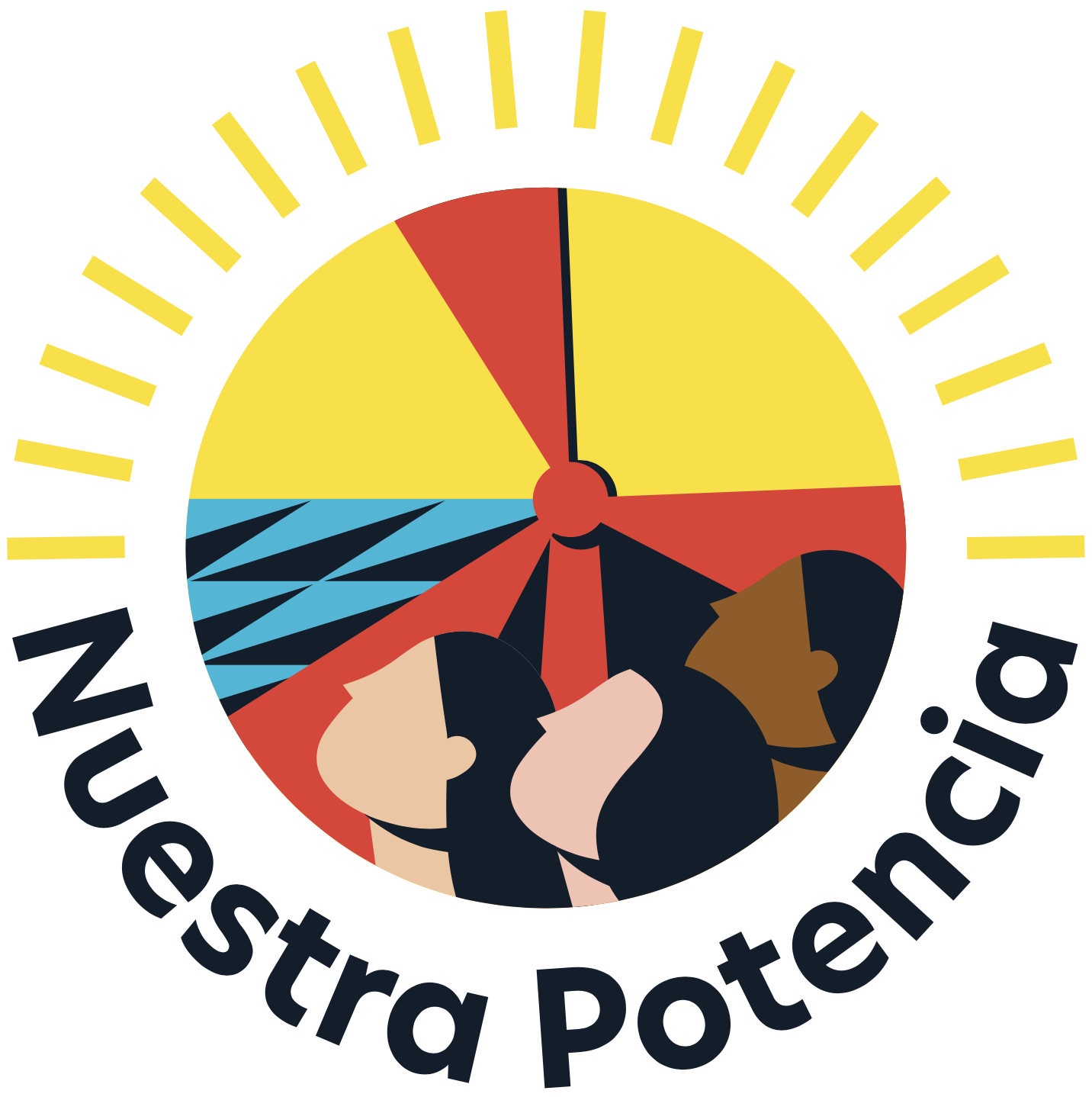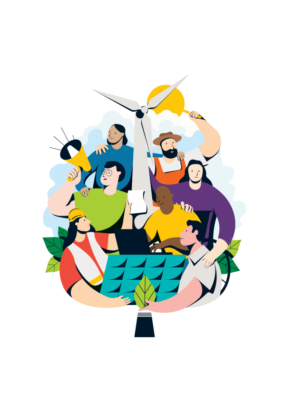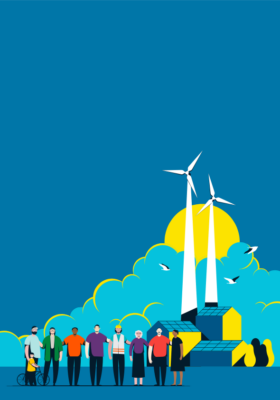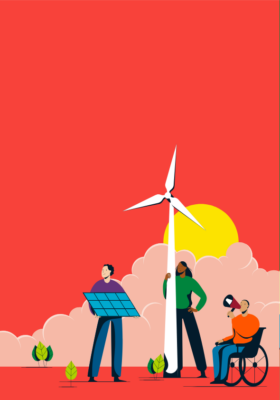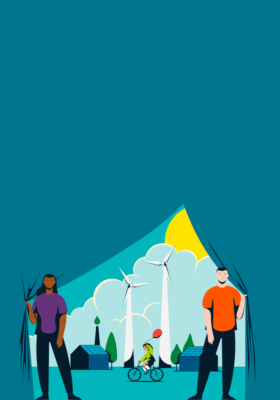“We are living now inside the imagination of people who thought economic disparity and environmental destruction were acceptable costs for their power. It’s our right and responsibility to write ourselves into the future.”
― adrienne maree brown, Emergent Strategy: Shaping Change, Changing Worlds
Finding the right renewable energy project for your community can be a challenge. It may take some time until you learn what is needed and you’ll have to become a bit of an expert about renewable energy and how the energy system operates. Building a renewable energy project in your community requires careful planning, coordination and a thorough understanding of why you’re doing what you’re doing, what needs to get it built, and what can get in your way — like the regulatory requirements.
During this analysis work, you’ll want to be able to answer three key questions:
What does the community want?
Thankfully you don’t have to answer these questions alone. Harvesting your community’s needs to build a renewable energy project involves engaging and mobilising community members effectively. The community has abundant wisdom — farmers know land that gets the best sun, bankers know how local projects are typically funded, neighbours know which land has been abandoned for decades, you likely even have renewable energy experts or people that may know them…
This appreciative view of your community, working with the potential that each person can offer to your project, creates a scenario of abundant resources and opportunities. This nurtures the relationships between people and helps strengthen the communal space with trust and mutual care. The job of the core team is reaching out to those people who may have the knowledge that you’re looking for and turning that knowledge into actionable steps so a community dream can come to fruition.
So, before you even start to look for those people, you’ll have to prepare the space and host a conversation that will allow the emergence of the best and deepest dreams that your community may have about its energy landscape. Creating an image of the very best we want to accomplish, overcoming the habit of identifying the problems only.

Ways that people have inspired community input has included:
- Organising informational sessions about the social, economic and environmental benefits and advantages of renewable energy projects
- Engaging with local and community leaders who can inspire and mobilise others
- Open community meetings and conversations to address concerns and gather ideas
- Hosting townhalls, including experts and city officials
- Sharing success stories of similar projects from other communities
- Showing the financial benefits (potential cost savings, job creations)
- Soliciting proposals and exploring funding options for renewable energy projects
- Getting students classes to lead interviews and generate proposals from those
- Having 1-on-1 meetings with experts and community leaders to solicit their knowledge and insight
Each of these inputs has the chance to expand beyond the initial core team and bring in new energy, input, and wisdom.
Each project possibility will need to be different and speak to different aspects of the needs of the community. Assessing the community’s electrical needs is a crucial step in planning and implementing a renewable energy project that meets the specific needs and expectations of the community. Some considerations:
- Are you focusing on residential, business or communal energy needs?
- Do you have specific areas/groups of people you want to provide electrical power to?
- What’s the current energy consumption patterns, types of energy sources currently used, specific energy needs for different purposes, and existing challenges and concerns related to energy use.
Having strong community participation from the beginning helps ensure the project’s success. Key community members can provide valuable inputs around much of this information.
You’ll start to weave these into some specific proposals and options. To assist, we recommend using a scorecard to look at the quality of different projects and their upsides-and-downsides:
| The 350 Energy Justice Scorecard The scorecard is a tool to assess your project on multiple levels. We strongly encourage you to do a scorecard for a couple of projects to help you decide which ones you want to support. |
What’s the type and size of the project?
By knowing what you want to accomplish, and the needs you want the project to meet in your community, help you think about the type and size of your project – go solar or wind, go big or start small?

In Fort Chipewyn, Canada, three indigenous communities partnered with the government to build a large 2.35 megawatt project — enough to meet 25% of the 1,000+ people’s total energy needs. At the time, it was the largest solar photovoltaic system in a remote Canadian community.
In Singapore they started with installing thin solar panels on two buses. That was their “proof of concept” so that when it was successful, 2 years later they could add solar panels on 50 more buses — with plans to expand.
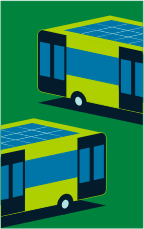

On Brazil’s Negro River the community tucked inside the Amazon started with 132 solar panels, 54 lithium batteries, and 9 inverters as an initial pilot, powering a church, school, and a dozen homes in the village.
Knowing the electrical needs of the community and the technical possibilities available can inform what can be the best project for your community. The most common community renewable energy projects are wind and solar, like installing solar on low-use land such as abandoned fields, car parks, capped landfills, or flat industrial buildings.
Types of Renewable Energy
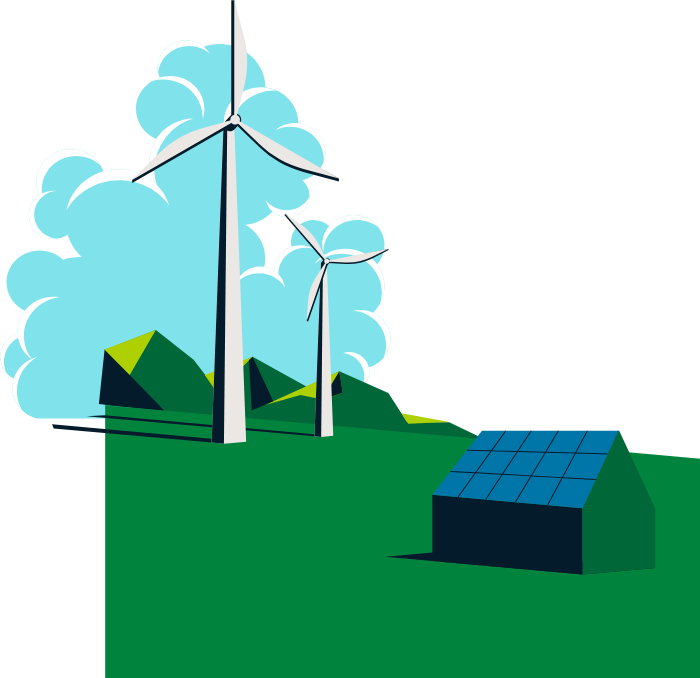
Wind energy
Wind turbines use blades to collect the wind’s kinetic energy. Wind flows over the blades creating lift, which causes the blades to turn. The blades are connected to a drive shaft that turns an electric generator, which produces electricity.
Solar energy
Solar energy systems use radiation from the sun to produce heat and electricity. There are three basic categories of solar energy systems:
Solar thermal systems use solar collectors to absorb solar radiation to heat water or air for space heating and water heating.
Solar thermal power plants use concentrating solar collectors to focus the sun’s rays to heat a fluid to a high temperature. This fluid generates steam to power a turbine and a generator.
Photovoltaic (PV) systems use solar electric cells that convert solar radiation directly into electricity. Individual PV cells are arranged into modules (panels). PV systems may have a single module to large power plants with hundreds of modules generating large amounts of electricity.
You might consider other community-owned renewable energy options:
| Install solar on electric buses (e.g. public bus operator Go-Ahead in Singapore) |  Install large-scale solar field (e.g. Fort Chiepwyan residents in remote Canadá [page 18]) | Install micro hydro (e.g. in Nagaland, India rural communities are setting up micro hydro to power their villages) |  Install thermal solar water on individual houses (e.g. Israel has installed solar water on nearly all residential houses) |
 Installing solar photovoltaic mini-grids (e.g. Sosai Renewable Energies for Nigeria [page 40]) | 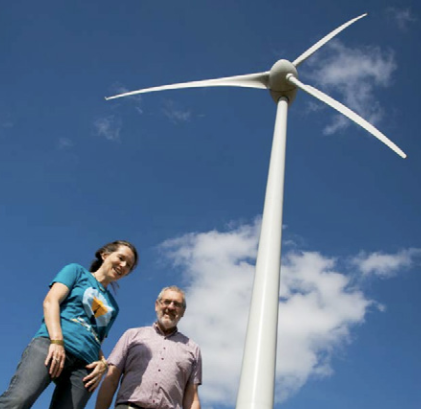 Install medium-sized wind turbines (e.g. Energcoop, the France’s largest cooperative renewable energy supplier which has a mix including wind [page 28]). | 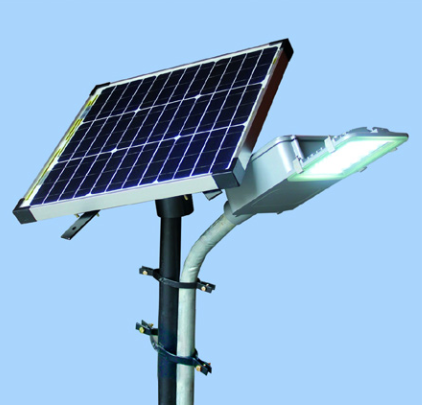 Install Solar Street Lights: Replacing traditional street lights with solar-powered lights, reducing energy consumption and providing lighting in public spaces. |  Install community Battery Storage: Installing energy storage systems, such as large-scale batteries, in the community to store excess renewable energy and provide backup power during outages. |
Some guiding questions for you to decide based on the needs of your community about the renewable resources potential available in your community:
| What is the purpose and scale of the initiative? For example, a community wishing to primarily produce energy to meet its own energy needs vs. a community wishing to become an independent power producer will likely pursue projects of different scales. Communities may also look at other purposes beyond generation and supply (e.g. distribution, heat, self-consumption, storage and transport) | |
| What is the renewable resource potential in the area and where will the project be sited/installed? The renewable resource potential (i.e. wind speed, solar radiation) and location will determine the technology options available to a community. For example, solar photovoltaic (PV) is often most suitable for urban applications because panels can be installed on the roofs of buildings. | |
| Should the system be grid tied? Connecting to the grid may promote reliability and keep power active when the renewable energy system is not producing enough power to match demand. In some countries, connecting to the grid offers financial incentives. However, the community may not be connected to the grid, a lack of incentives may make it faster and easier to do a microgrid, or technical barriers may exist (some countries have a backlog of grid-tied proposals). | |
| Are local parts and labour easily accessible? The availability of local parts and labour reduces challenges associated with operating and maintaining renewable energy installations. | |
| Which renewable resource encourages the broadest participation? Some technologies may be more accessible in terms of financing, operation and maintenance to a broad range of community members, including women and youth. | |
| Does the community have the skill set to build, operate and maintain the technology? Communities wishing to take an active role in the project’s construction and operation maintenance may want to assess the community’s existing skill sets to determine whether an investment in training to build capacity is needed. |
There are other important things for you to consider that can help you when doing your research about what can be the best project for your community. We suggest creating three maps to help your analysis:
- Map #1: Geographic Mapping to identify possible locations for the project
- Map #2: Community mapping of allies and potential partners
- Mapa nº 3: Puntos de intervención de las energías renovables
In some cases it’s possible you can find partners or public institutions for their support in those mapping exercises (or simply to do it for you).
Get more details about structuring the community-led projects. This requires going out to your community and meeting many, many people: Mapping: How to source community knowledge for our project?
Where do we find the money for its implementation?
Once you know the size and type of renewable energy project your community wants to build, you’ll need to make a financial assessment of your project costs. This will give you an estimate of how much you’ll need to raise to get the project implemented, and so mapping which financial resources are available is an important next step.
We urge caution around this period. You’re going to want to get quotes from a number of different installers. Those quotes may vary quite a bit, as they’ll make different assumptions and have a range of different access to cheaper products and experience, especially if your project is rural or mountainous or has other special challenges. Getting someone who knows your situation may indeed cost more. But also notice ways you might reduce costs by getting the community to be involved in parts of the installation appropriate to skills or obtaining the materials through other channels.
We also encourage caution at the point when a quote arrives with a big number and a lot of zeroes. The upfront costs can be daunting. Allow the feelings to wash over you — “we don’t have that money… we can’t do this…” Let it roll around until you can get back into a mindset that a determined community can find what it needs.
Securing financing for renewable energy projects can be challenging, especially for smaller or newer projects, due to perceived risks, lack of familiarity and unfriendly government policies and regulations.
There are a variety of different sources. And we want to start by looking within your community. For inspiration:
En Uganda, hay muy poco acceso a la financiación solar. Entonces, Utilities 2.0 de Power for All ideó un plan que reúne a una coalición de la empresa de servicios públicos a gran escala y los programas de energía renovable más pequeños y ágiles. Su primer paso concreto fue ejecutar un proyecto piloto para apoyar a pequeñas empresas nuevas con una microrred solar. Los ingresos de las “nuevas empresas creadas aumentaron un 68 % durante el período del proyecto piloto”. De este modo, resultó más fácil proponer a las empresas que ayudaran a inyectar dinero en la red, lo que luego benefició a los ciudadanos comunes que, de otro modo, no podrían pagar los costos iniciales. (“Entre los beneficiarios se encuentran los estudiantes de la escuela local, que ahora usan una bomba eléctrica y ya no tienen que desplazarse largas distancias para recoger agua. El pueblo también cuenta con farolas por primera vez y una fresadora y secadora comunitaria para ayudar a sus numerosos agricultores locales”.)
En Australia, han creado una estructura de financiación llamada Citizens Own Renewable Energy Network Australia.En este caso, los fondos los donan ONG, empresas y ciudadanos locales y todo el dinero se entrega en forma de préstamos sin interés para afrontar los grandes costos iniciales de la energía renovable. Una vez establecida una fuente de energía renovable, parte de sus “ganancias” energéticas vuelven al fondo rotatorio.
In many countries you can set up variants of “Community Solar” programs. The community benefits from the reduction in solar energy bills Community projects allow members of a community to share the benefits of solar power even if they cannot (or prefer not) to install solar panels on their own property, for example:

Even if your community can’t raise all of the funds internally, starting with the community at any level helps show determination and buy-in — which will matter to a prospective funder/banker. In one low-income Polish apartment building, tenants all contributed a small down payment to the project. The collective contribution was very low but significant for the individuals. This helped leverage the landlord to buy-in to the concept and put in a small amount themselves. This then helped leverage external funding (a mix of government and private).
Renewable energy’s upfront cost has to be put into perspective. There is tremendous cost to the current electrical system: air pollution, financial dependency, uncontrolled inflation as energy prices soar, and more.
Each community will have different opportunities available to it. Broadly, there’s a range of places where the money comes from for individual projects.
| La propia comunidad | From the old infrastructure | El gobierno | Actores externos |
| Revolving funds (the project starts small, people who benefit pay a percent of the benefits to support the next step…) Using money from local businesses who benefit from the energy Philanthropy Sliding scale (people put in money according to how much they can afford) | Polluter pays (forcing the fossil fuel industry to pay) | Subvenciones y subsidios (tax credits, direct funding, rebates), possibly funded by Fossil fuel subsidy reform (e.g. moving from that previously subsidised the old infrastructure) Alianzas público-privadas. Energy Performance Contracts (contracts with energy service companies sharing the cost savings or production revenue) | Venture capital Green bonds / Grants / Foundations Development Bank loans / project finance Crowdfunding Carbon credits |
Knowing your local context will be very helpful in assessing which of these is more viable and how.
Governments can play a crucial role in fostering a supportive environment for renewable energy projects by providing financial incentives and creating favourable policies. You may need to advocate for it. And this may become the first battle you’ll have to pick to build the viability of your project.
Get more details about financing community-led projects: Where do we find the money
| Tips to not get lost Get things going. Be patiently impatient. There are lots of new pieces to learn about: new terminology, new people, new institutions and new technologies to understand. It can be tiring and intimidating about how much you need to learn. You know most of what you need to know: the climate is changing rapidly, and we have to implement new technology that works for our communities. Keep your mind open and ears open. Be ready for some community members who will try to convince you that nothing can happen — stay resilient because the only way things happen is that people believe they can happen. The reason why having a strong core team is so important, someone has to play the role of conductor of the orchestra and keep the flame of the shared vision alive. Current technology can do this. Reports come out daily of new, exciting-sounding technology. Many investors are trying to get money for their inventions by telling us we need their new innovation. Unless you’re an expert in this field, you don’t need to get into any of that. All the technology to solve the climate crisis exists. We just need to use the ones available that are aligned with our values. Everyone is a potential ally. At the early stage of research, do not write anyone off. Some people will tell you “it can’t be done” — but once it’s shown to be feasible they might be an ally. Some people might not care about climate change — but they might be sold for other reasons. So keep a good relation and ask if you can go back to them later with questions. You will hear a lot of conflicting opinions. Some people will believe in one route. And others will believe in another route. Your group will have to make up its own mind. But do not despair — keep listening. Every problem is solvable. Hold onto the mindset that no problem cannot be solved. When you talk to people, sometimes people will say “that’s not possible.” If you don’t have the knowledge, you don’t have to talk them out of that position — but it’s always okay to say “I hear you, and I’m gonna keep looking into this.” Hold each conversation lightly. Every group will have its own analysis. Listen to it — but do not rely too much on your initial conversations. Don’t get too sold on any one idea too quickly — check it out with others. Each specialist has their own technical language. Do ask and learn — but remember you do not have to become an expert about all the things they are experts in. Keep notes — so you can share with your team. Stay rooted in your own values. You don’t have to agree with everyone. You don’t even have to persuade them of yours (especially in early meetings). Just see where they can fit in and help your project succeed. |
When you have done a lot of community meetings and your core team has filled in the maps, you’ll have a good sense of some different options. This is a good time to return to the Scorecard and assess which project your team wants to get behind. This will be an important decision — but the knowledge you will have gained will be invaluable for the next steps ahead.
When your core team has made a decision, you’re ready for the next phases. You have a shared vision and main goals defined, what you need now is a good work plan.
Supplemental Resources
| Articles / Resources | Where do we find the money Mapping: How to source community knowledge for our project? 350’s Energy Justice Scorecard |
